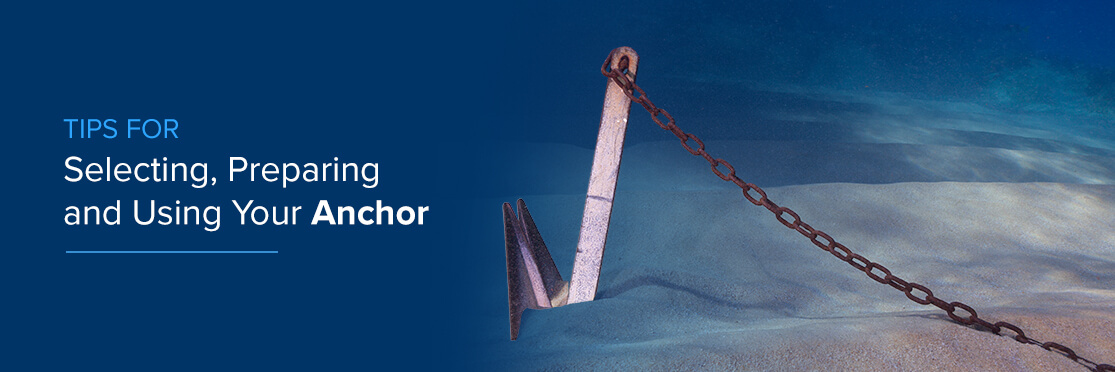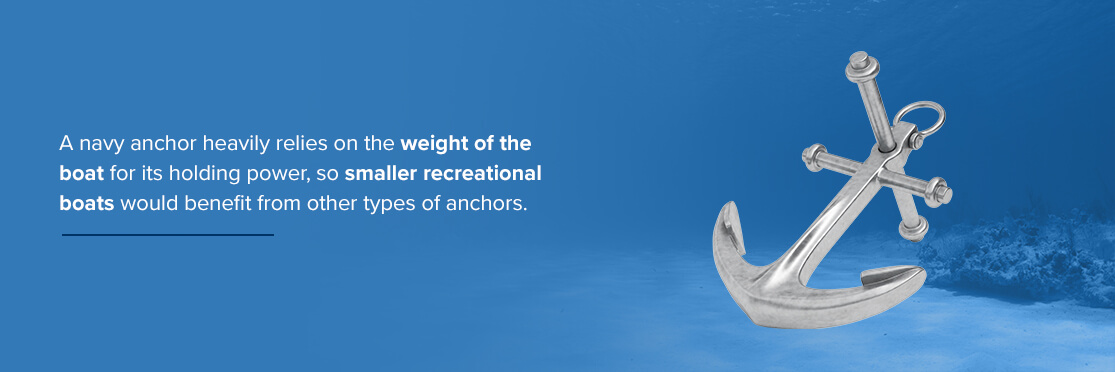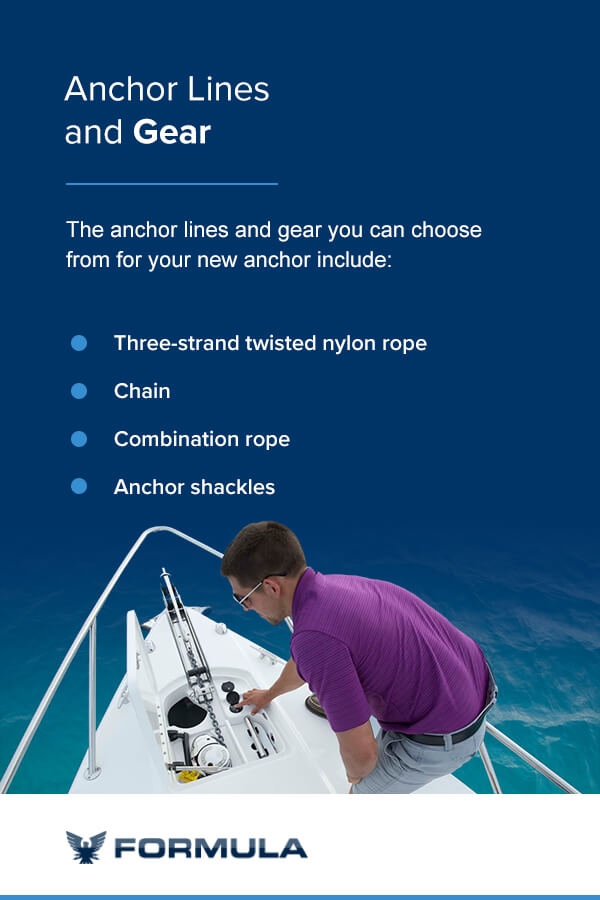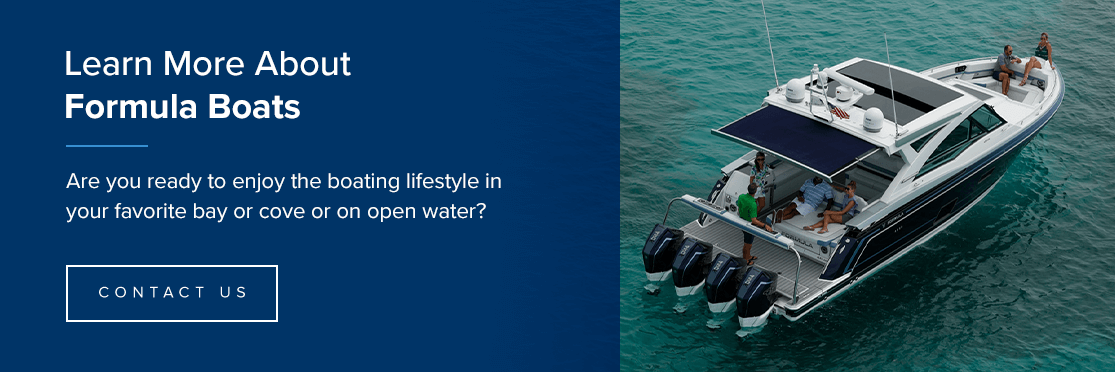
Part of owning a boat means ensuring that every aspect of your vessel is in safe working condition. This responsibility means checking that you have all of the necessary onboard equipment like fire extinguishers, life vests, first-aid kits, rope, buoys and an anchor. In particular, having the right anchor on your boat will keep it as secure as possible when it’s anchored.
How do you choose an anchor? How do you use the anchor properly to ensure your boat stays in place? Learn everything you need to know about choosing an anchor, prepping the anchor and setting it up so you can confidently enjoy your time on the water.
Factors to Consider When Choosing an Anchor
The anchor you select must be the right size, display adequate strength and have the ability to penetrate the surface you’re boating in. It’s crucial that boat owners consider these aspects when choosing an anchor, rather than picking one based on price or convenience. After all, a boat is a large vessel that requires well-engineered gear to keep you and your passengers safe on the water.
An anchor must be able to secure your boat in various conditions in the water. Are you anchoring in a sandy cove or an open bay with a rocky bottom? No matter your boat’s location, you need an anchor that can stay strong to hold your vessel in place. The anchor you have on your boat should hold it securely in place for a significant amount of time, like during harsh weather or overnight.
Check out the features you should consider when choosing the best anchor for boating:
- Strength: All anchors are rated by their holding power, or their strength to hold a boat in place considering factors like water conditions, bottom conditions, the size of your boat, wind and weather conditions and other factors that will impact the anchor. An anchor will dig into a seabed or lake bed and is secured by the material at the bottom and a weighted rope, chain or other materials above.
- Weight: The size and weight of your anchor should correlate with the size and weight of your boat and the conditions you operate your vessel in. How long do you plan to anchor? Are you operating your boat in a calm lake or choppy sea? These factors and more are considerations for an anchor’s weight. If you’re deciding between two different anchors, it’s often best to choose the larger one so you know your boat will be secure in case of rough waters or rocky seabeds.
- Bottom conditions: The water’s bottom conditions are crucial to the effectiveness of an anchor. All anchor styles work best in specific bottom conditions. An anchor needs to create resistance to secure the boat — its ability to dig or penetrate the seabed or lake bed determines its resistance. The types of bottom conditions include mud, sand, rocks, grass or clay.
Types of Anchor Styles
The style of anchor you use can also help better hold your boat to the bottom of the water you’re in. Once you select a boat anchor that will suffice for your boating conditions, you’ll need to choose the size and weight best for your boat.
FLUKE OR DANFORTH
The fluke anchor, also known as the Danforth or the lightweight anchor, is a style popular among boaters, especially those who primarily use their boats for recreation.
These anchors have serious holding power abilities for their size. Danforth anchors are typically smaller than other styles, but their design allows them to dig deep into the bottom of the lake or seabed and create powerful resistance to stay anchored. A fluke anchor is easy to stow away on your vessel because they fold flat. Since fluke anchors can dig deep into the bottom of a body of water, they’re best for boaters who are commonly anchoring in sand or mud.
There are fluke anchors that range between 2.5 pounds to almost 200 pounds, so boaters can find the best fit for their boat. Consider a Danforth anchor if you’re looking for a lightweight anchor and you’re boating in areas without rocky or grassy lake beds or seabeds.
GRAPPLING OR GRAPNELS
An inexpensive anchor boaters can use is a grappling or grapnels anchor. A grappling anchor is a good option for smaller boats like canoes or kayaks that aren’t very heavy and don’t require a lot of holding power. These anchors are great for smaller boats because of their design and small size. As a result, boaters can fit them onto smaller boats without having to worry about limited storage space.
These anchors are commonly made from galvanized metal or bent re-bar and have folding flukes that can grab onto the seabed or lake bed.
NAVY
When you imagine an anchor, you probably think of one with the traditional long center and two curved ends at the bottom. This type of anchor is known as the navy anchor. This type of anchor has a stock and arks and flukes that are strong enough for lake beds or seabeds with rocky or grassy bottoms. The arms of the anchor can easily dig into a crevice of the rocky or grassy bottom and secure the boat.

This anchor differs from other types because only one arm of the navy anchor is holding onto the bottom of the lake or sea while the other is exposed. Other burying anchors will have both flukes dug into the bottom. This trait makes a navy anchor useful for larger boats or ships — a navy anchor heavily relies on the weight of the boat for its holding power, so smaller recreational boats would benefit from other types of anchors.
PLOW
For boaters who enjoy cruising to various locations and need an anchor that can handle various types of lake beds or seabeds, a plow anchor may be best. A plow-style anchor has a design that’s useful for anchoring onto different types of materials. Its holding power is strong, whether holding onto rocky, grassy or sandy bottoms.
A plow anchor will easily bury itself at the bottom when the boat pulls it enough to anchor it securely. The design of the anchor allows it to stay in its position in case of wind or other water conditions that may impact holding power.
MUSHROOM
A mushroom anchor resembles its namesake. The mushroom shape allows for it to have a strong suction on soft lake beds or seabeds that’s difficult for rough conditions to break. The boats that can benefit from mushroom anchors are smaller vessels like kayaks and canoes. Other smaller boats can use this type of anchor as a launching hook.
A mushroom anchor is commonly used for anchoring and mooring. Mushroom anchors used for this application can weigh thousands of pounds. They’ll have buoys or beacons attached for marks in the water. They may also have lights or sound-making devices attached to keep waterways safe.
CLAW
For those who are often cruising in the open sea or require an anchor that can handle various types of bottoms, a claw anchor is an excellent option. The claw anchors have tremendous holding power for their size.
This type of anchor is modeled after the anchors that oil rigs use. The smaller versions for boats can easily secure themselves on various types of seabeds or lake beds. Claw anchors are best for boaters who are commonly anchoring in windy conditions.
These anchors will hold onto the bottom regardless of the strength of the boat shifting because of windy weather or choppy water.
Anchor Lines and Gear
Anchor lines for boating ensure the anchor works to its full capacity. The materials you use to connect your anchor to your boat are essential to keeping your boat secure and creating adequate resistance to keep the anchor in place. Consider your boat’s size, the conditions you operate your boat in and the type of anchor you have.

The anchor lines and gear you can choose from for your new anchor include:
- Three-strand twisted nylon rope: Three-strand rope is great for anchors because it does the best job absorbing shock and handles tugging and shifting. It’s the most common choice for anchor lines because of its strength. It’s important to clean your rope regularly to keep it in the best condition, especially when it’s continually exposed to water or salt.
- Chain: Boaters can use chain instead of three-strand nylon rope to connect an anchor to their boat. Using a chain has numerous benefits for boaters in certain boating conditions. Chains can add weight and strength to anchor connection and improve the resistance of the anchor. It’s beneficial to use a chain if you’re anchoring on a rocky bottom because rocky bottoms may cut nylon ropes. You can use chains made from stainless steel, galvanized metal or chains coated in vinyl.
- Combination rope: Combine three-strand nylon rope and a chain rope to create a strong connection between the boat and anchor. You can purchase a combination rope or create one with your own rope and chain. Base the amount of chain you have on the length of your boat or the weight of your anchor.
- Anchor shackles: The anchor shackles you have will secure the connection between the anchor and the line. It’s important to check the shackles regularly to ensure they’re tight and have no wear.
How to Prepare and Set Your Anchor
Once you have your anchor and all of your gear, you’ll need to prep your anchor before using it. Preparing your anchor ensures your items are secure and you have everything you need before setting out on your boat.
Connect the line, chain or both onto your anchor with the anchor shackles. Make sure you have long enough rope or chain for the size of your boat and for the depth of the water you commonly anchor. It’s also important to keep your anchor and line in an accessible storage area on your boat in case of an emergency.
After you prepare your anchor, you’re ready to learn how to set and retrieve your anchor in a seabed or lake bed. After you place your anchor in the water, you’ll need it to dig into the bottom or secure itself in a crevice in order to anchor in your spot.
Here are three ways to ensure the anchor is set in the bottom of the water:
- Setting: The best way to begin setting the anchor is to pull on the line. The anchor digs deeper or fits more securely in a crevice when the boat pulls on the line. If your boat has power, place your boat in reverse to tug on the line and chain. To set the anchor properly, you’ll need to pull on the rope for a long time. The continuous strain on the line will pull the anchor tighter into its spot at the bottom.
- Scope: The scope is the ratio of line length to water depth. The scope can determine the strength of the holding power, so you should ensure the scope is favorable.
- Resetting: Water and wind conditions can impact your anchor placement and cause you to reset the anchor. There are different ways you can tell if your boat has shifted and you’ll need to reset the anchor. You can set an alarm on your chart plotter to notify you when the boat swings, set an alarm on an electronic compass to notify you if the boat moves, set an alarm on a depth sounder or determine an anchor watch with landmarks or other structures.
Other Important Steps in the Process
Knowing how to use an anchor is an essential skill to have on the water. Other important steps for smooth anchoring include:
- Selecting an area to anchor that has enough room for your boat and has a bottom that your anchor is capable of securing.
- Achoring from the bow of the boat, as anchoring from the stern can cause boats to capsize.
- Securing your anchor line on a bow cleat or another appropriate location and giving the line a good tug to ensure it’s secure.
- Checking the knots on your anchor line.
- Moving the boat forward to dislodge the anchor when finished anchoring.
Tips for Using an Anchor
Knowing the rules and ways of the water can make you a safe boater so you avoid anchoring mistakes. Before anchoring your boat, check out these helpful tips to improve your skills:
- Some areas of the water are off-limits for anchoring. Check local charts for maps that show where anchoring isn’t allowed. Examples of areas where boaters can’t anchor include channels or fairways.
- Head into the current or wind when anchoring. This will help you place your boat in the position you want.
- If you want to make the rope heavier and reduce swinging, use an anchor weight to make the anchor more secure.
- If you’re in an area that has soft bottom conditions or rough weather, consider throwing out two anchors.
- Various anchoring techniques, like the Bahamian Moor, help keep your boat secure and reduce swinging if there’s limited space to anchor.
Learn More About Formula Boats
Are you ready to enjoy the boating lifestyle in your favorite bay or cove or on open water? Explore the water on a new Formula Boat by browsing our various models of luxurious boats. Formula Boats has a long history of providing high-quality boats and giving customers the opportunity for the best boating experience. Request a catalog today to find the perfect boat.


